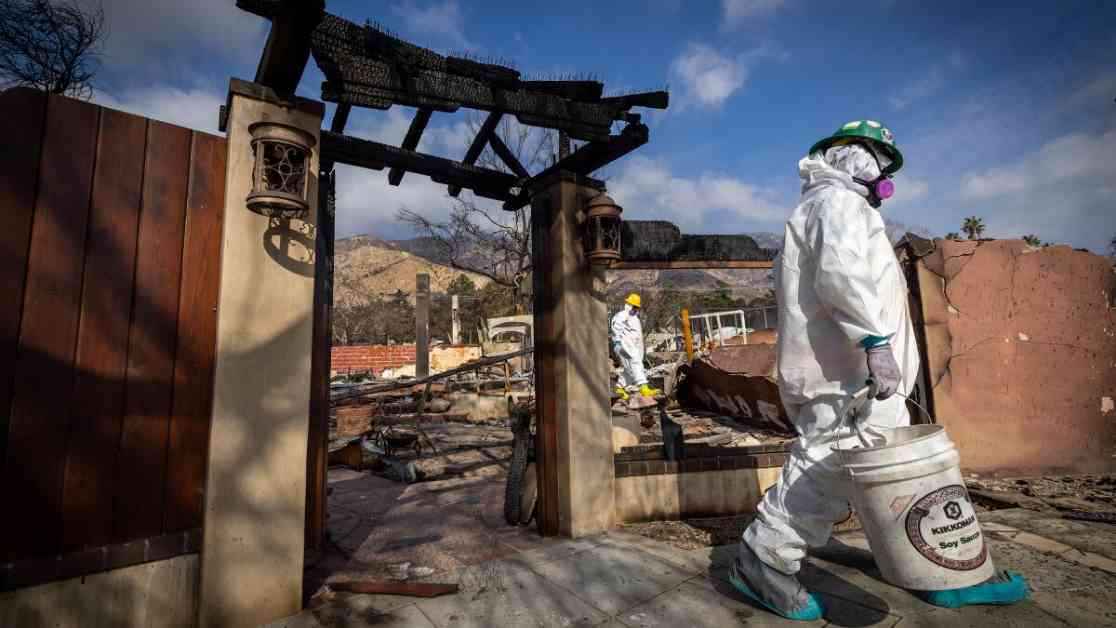Amidst the aftermath of the devastating Los Angeles County fires, federal agencies such as the Federal Emergency Management Agency (FEMA) and the U.S. Army Corps of Engineers have come under fire for their decision to skip soil testing following the cleanup of wildfire debris. Despite protests from wildfire survivors and California officials, FEMA stands firm on its stance that scraping off the topsoil is sufficient to ensure public health and safety.
Debating the Decision: To Test or Not to Test?
The controversy arises from the fact that FEMA has decided to forego the crucial step of soil testing after every major wildfire event in California since 2007. This testing is crucial to determine whether properties have been adequately remediated to meet state standards and are free from toxic substances. However, FEMA argues that the removal of 6 inches of topsoil is enough to eliminate any potential health hazards.
Brandi Richard Thompson, a spokesperson for FEMA Region 9, explained that the agency’s cleanup strategy is based on scientific best practices and longstanding policies. She emphasized that any contamination below 6 inches is unlikely to be directly related to the fire and does not pose an immediate threat to public health. Despite calls for additional testing, FEMA maintains that local and state authorities have the discretion to conduct further assessments if deemed necessary.
While FEMA had previously funded soil testing in the aftermath of the 2023 Maui wildfires, the agency now cites historical wildfire data as a reason to discontinue this practice in the future. This shift in policy has triggered concerns among public officials and fire survivors who fear that hazardous levels of toxic substances may remain in the soil after cleanup efforts.
Community Concerns and Contamination Risks
The federal cleanup policies have sparked outrage among residents and lawmakers who are pushing for more comprehensive testing measures to ensure the safety of affected properties. Governor Gavin Newsom has convened emergency meetings to address the lack of soil sampling, reflecting the growing apprehension surrounding the potential health risks associated with inadequate remediation efforts.
Representatives such as Brad Sherman and Judy Chu have been vocal in their calls for thorough soil testing to protect residents from exposure to harmful chemicals. They emphasize the importance of prioritizing public health and safety in the recovery process, even if it means incurring additional costs for soil remediation.
Residents like Kenneth Ehrlich, who lost his home in the Pacific Palisades fire, are wary of rebuilding on potentially contaminated land. Concerned about the long-term health implications for his family, Ehrlich is exploring private options for soil testing to ensure that his property is safe for reconstruction. The lack of transparency and clarity surrounding the cleanup process has fueled skepticism among residents who are demanding more accountability from federal agencies.
In response to mounting pressure, the U.S. Army Corps of Engineers, responsible for overseeing debris removal, has reiterated its commitment to following FEMA directives. Despite criticisms about the lack of testing and potential contamination risks, the agency maintains that its hands are tied by federal guidelines that prohibit additional soil sampling.
As the debate over soil testing intensifies, residents and officials alike are calling for a more cautious and thorough approach to wildfire cleanup. While the urgency of debris removal is acknowledged, the need to prioritize public health and safety remains paramount in the wake of environmental disasters. The ongoing dialogue between federal agencies, local authorities, and community members underscores the complex challenges of post-disaster recovery and the importance of collaborative solutions to safeguard affected populations.
And remember, when it comes to rebuilding after a disaster, safety should always come first.


